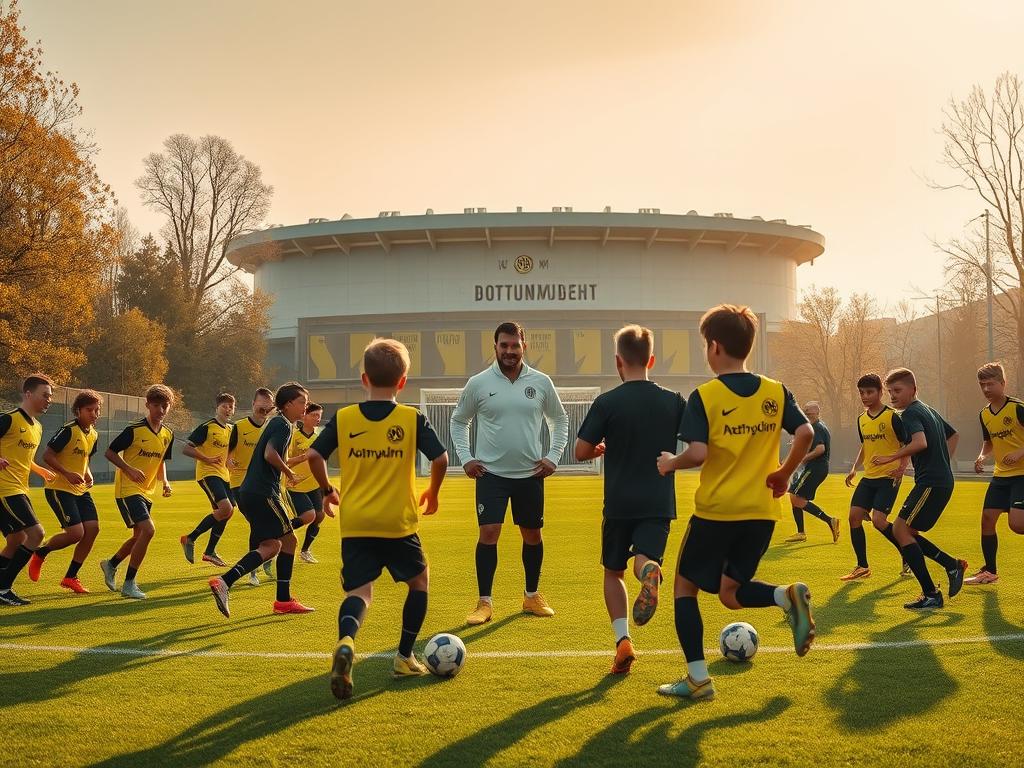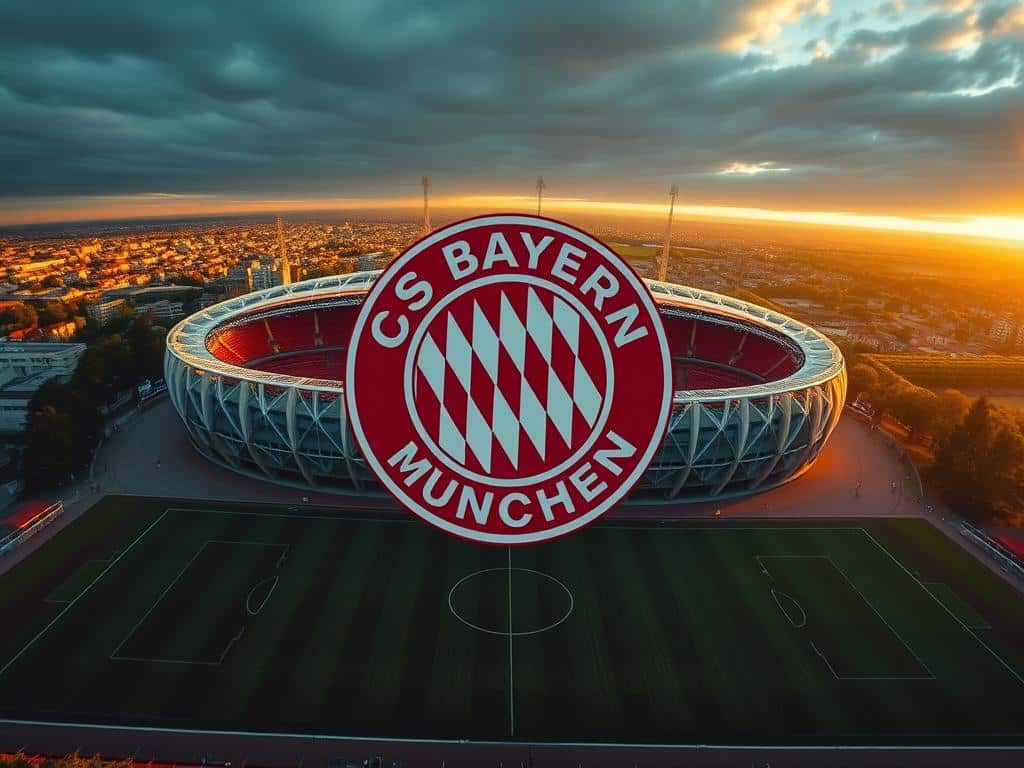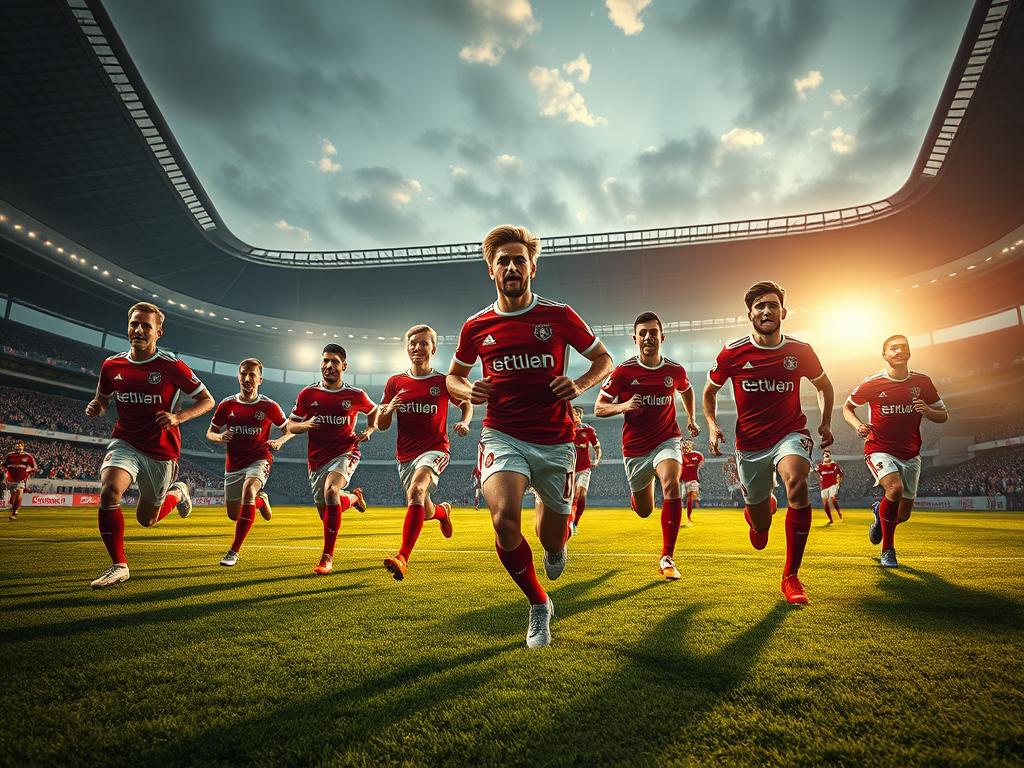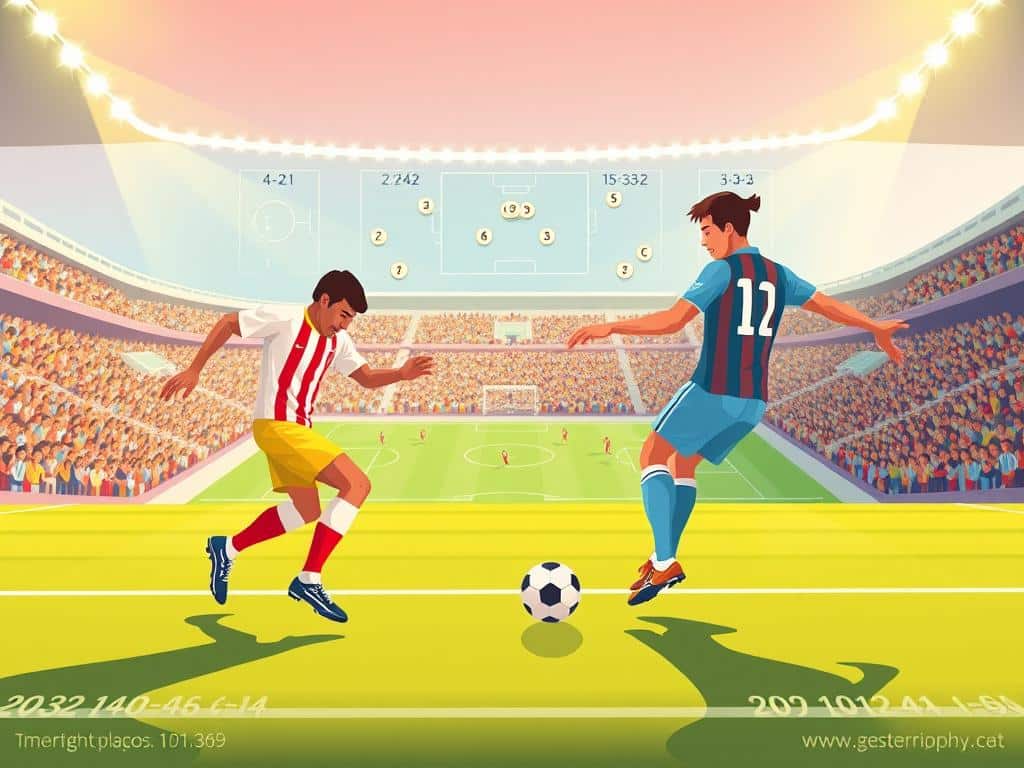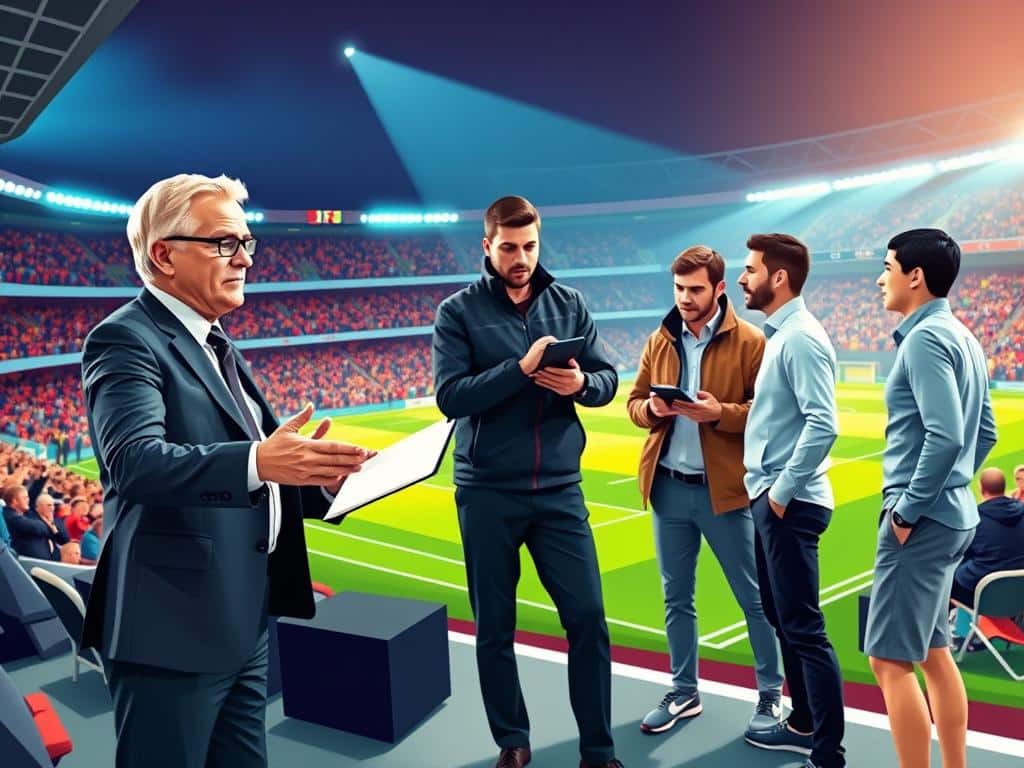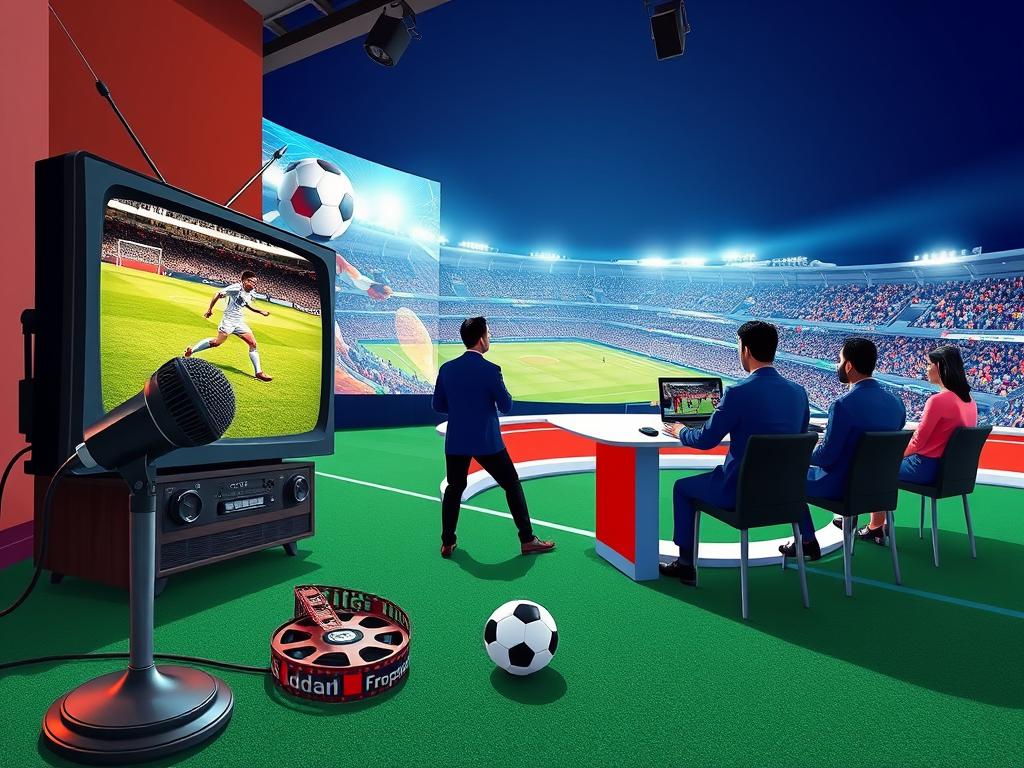Ever wondered how some teams consistently produce world-class talent? Look no further than Borussia Dortmund’s famed development system. Known as one of Europe’s top talent factories, this program has shaped stars like Mario Götze and Kevin Großkreutz—both World Cup winners.
Today, names like Marco Reus and Christian Pulisic highlight the academy’s impact. Their success stems from cutting-edge training methods and facilities like the Hohenbuschei complex. Whether it’s the U19 or U17 squads, every player gets a clear path to growth.
Want to know what makes this system special? Let’s dive into the secrets behind their winning formula.
The Legacy of Borussia Dortmund’s Youth Academy
Few clubs can match the track record of producing elite talent like this German powerhouse. From local pitches to the World Cup stage, their system has become a blueprint for success. Let’s explore how they built this legacy.
A History of Developing World-Class Talent
It all started in 1993 when the U19 squad clinched their first Bundesliga title. Since then, they’ve added seven more trophies, proving their consistency. Players like Mario Götze and Kevin Großkreutz kicked off here before lifting the World Cup in 2014.
The program’s secret? A mix of technical drills and mental grit. They call it the “BVB Way”—a philosophy that turns raw skill into top-tier performance. Today, alumni like sporting director Michael Zorc oversee the next generation.
Key Figures Behind the Academy’s Success
Lars Ricken took the helm in 2008, revolutionizing recruitment. His 17-year tenure focused on spotting potential early. Under his watch, the academy reached new heights, molding players for the 2026 World Cup.
Current coaches continue this tradition, blending innovation with tradition. Their goal? To keep Borussia Dortmund at the forefront of youth development. From scouts to trainers, every role fuels this winning machine.
How the Borussia Dortmund Youth Academy Works
What makes a top-tier football academy tick? It’s a mix of smart structure, cutting-edge methods, and a clear path for growth. Here’s how they turn raw talent into pros.
Structure and Age Groups
With 15 teams from U9 to U19, every player follows a 7-stage journey. Each level sharpens skills tailored to their age:
- Junior phase (U9–U12): Focus on fun, fundamentals, and flair.
- Pre-academy (U13–U15): Tactics and teamwork take center stage.
- Elite squads (U16–U19): Prep for pro contracts with high-intensity drills.
The Evonik-Fußballschule program, running since 2011, ties education to football. School mornings, training afternoons—balance is key.
Training Philosophy and Methodology
Every squad plays the same 4-3-3 formation. Why? Consistency breeds confidence. Coaches drill this “DNA” into players early, so tactics feel like second nature.
Days are packed with:
- Technical sessions: Precision passing, quick turns, and shooting drills.
- Cognitive boosts: VR simulations test decision-making under pressure.
- Fuel for growth: Meals are designed for teen athletes, balancing carbs and protein.
It’s not just about kicking a ball—it’s about building brains and bodies for the big leagues.
Notable Graduates: From Academy to Stardom
From local pitches to global stages, the club’s graduates have rewritten football history. Their journeys—from grassroots to glory—prove why this system is a blueprint for success. Let’s meet the players who turned potential into legendary careers.
World Cup Champions and Bundesliga Legends
Mario Götze’s story epitomizes the program’s impact. After joining the U17 team, he became the youngest scorer in Bundesliga history at 18. His 2014 World Cup final goal cemented his legacy—a moment born from years of tailored development.
Christian Pulisic shattered barriers too. At 17, he was the league’s youngest non-German scorer. Now a club World Cup contender, his rise mirrors the academy’s knack for polishing raw talent.
Current Stars Who Started Here
Today, Giovanni Reyna leads the next wave. The 2026 USMNT starter honed his skills here before dominating the Bundesliga. Jamie Bynoe-Gittens, a 2025 UEFA Young Player nominee, echoes this trajectory with his electrifying pace.
Young players like Paris Brunner and Samuel Bamba are already turning heads. Their rapid progress hints at the system’s enduring edge—even against rivals like Bayern Munich, whose alumni success rates trail by 12%.
International graduates add to the legacy. Denmark’s Jacob Bruun Larsen credits his tactical IQ to years in the program. For these stars, the academy wasn’t just a team—it was the launchpad to the world stage.
The U19 Team: Pathway to Professional Football
The U19 squad isn’t just a stepping stone—it’s where future stars prove their worth. Under new coach Felix Hirschnagl, this team blends seasoned prospects with rising talents, all eyeing first-team contracts.
Recent Achievements and Competitions
Fresh off a UEFA Youth League qualification, the team dominated preseason against 1. FC Köln U19s (3-1). Hirschnagl’s 4-2-3-1 formation—a shift from last year’s 4-3-3—showcases his focus on defensive stability.
Key August fixtures include:
- Bayer Leverkusen U19s (Aug 12)
- RB Leipzig U19s (Aug 19)
Their Arnhem training camp featured grueling double sessions and team-building hikes. Captain Nnamdi Collins led leadership workshops, cementing his role as the squad’s anchor.
Meet the Current U19 Squad
The 25-player roster includes:
- 3 goalkeepers, including USA prospect Diego Alvarado
- 8 defenders, with Collins marshaling the backline
- 10 midfielders running Hirschnagl’s high-press system
Watch for winger Paris Brunner—his 8 goals last season caught the first team’s eye. Social media content highlights his dribbling drills, a scheduled push to engage fans.
Hirschnagl’s philosophy? “Win the ball in 8 seconds or less.” This aggressive approach mirrors the senior team’s style, smoothing future transitions.
The U17 Team: Building the Next Generation
The U17 squad is where raw talent transforms into future stars. This team blends rigorous training with creative freedom, preparing players for higher challenges. Under head coach Sebastian Geppert, they’re redefining what it means to develop at the youth level.
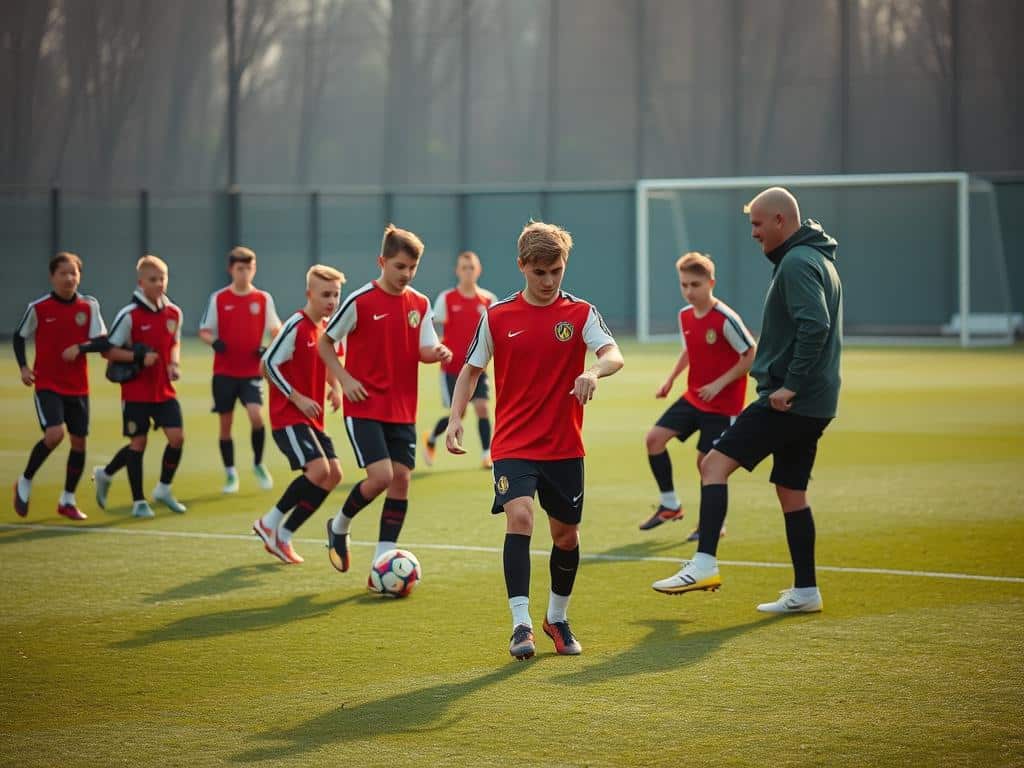
Development Focus and Coaching Staff
Geppert’s positional rotation system keeps opponents guessing. Players master multiple roles, from winger to defensive midfielder. This flexibility shines in their hybrid 4-4-2/3-5-2 formation—a rarity at this age.
Key pillars of their program:
- 14-year-old phenom Raúl König: Scored 22 goals last season, drawing comparisons to young Götze.
- US recruit Cole Campbell: Adapted quickly through language classes and mentorship.
- Academic balance: Mornings at local schools, afternoons on the pitch.
Upcoming Talents to Watch
Three 2025 Fritz Walter Medal nominees headline this squad. Their September clash against FC Schalke 04 U17s will test their tactical versatility.
Geppert’s mantra? “Play fast, think faster.” Drills emphasize:
- One-touch passing under pressure.
- Dynamic shifts between formations mid-game.
- Mental resilience through simulated high-stakes scenarios.
For these players, every session is a step closer to the pros—and the team’s structure ensures no one gets left behind.
Training Facilities: Home of Future Stars
Behind every great player lies a world-class training ground. At the 53-acre Hohenbuschei complex, young talents hone their skills with tools rivaling top-tier clubs. This is where science meets sweat, and potential transforms into excellence.
Hohenbuschei Training Ground
Imagine sprinting across 12 pristine natural grass pitches, each maintained by a rotation system that ensures perfect surfaces year-round. The hydrotherapy recovery center helps players bounce back faster, while 360-degree cameras track every dribble and pass.
At the biomechanics lab, motion sensors analyze strides and strikes. Coaches use this data to tailor training regimens, turning weaknesses into strengths. Even sleep is optimized—dormitories feature monitoring tech to ensure rest matches performance demands.
State-of-the-Art Infrastructure
Video analysis theaters with dual coach stations break down gameplay frame by frame. Young teams study opponents and refine tactics in these high-tech rooms, blending theory with practice.
A partnership with TU Dortmund University brings sports scientists into the fold. Their research on nutrition and injury prevention fuels the program’s edge. Fan-focused content, like behind-the-scenes clips, showcases these innovations, bridging the gap between prospects and supporters.
From the pitch to the lab, every detail is designed to nurture the next generation. Competing teams may match the passion—but few can rival the precision of this setup.
Competitions and Leagues for Young Talent
Competitive matches shape young talents like nothing else—here’s how top-tier leagues fuel their rise. For budding stars, these tournaments are more than games. They’re chances to shine under pressure and catch scouts’ eyes.
UEFA Youth League and DFB Youth League
The UEFA Youth League mirrors the Champions League, offering a team like theirs a global stage. Group H pits them against Bayer Leverkusen, a rivalry that sharpens skills at every level. Last season’s run to the semifinals proved their tactical grit.
Domestically, the DFB Youth League is just as fierce. The coach drills players to adapt to different styles, from RB Leipzig’s high press to Schalke 04’s physicality. Key 2025 fixtures:
- August 16–17: U19 DFB-Pokal first round (regional derbies).
- September: Clash with Manchester City’s U19s, a scheduled push for scouting spotlight.
Domestic Cup Success
Their record 8 U19 Bundesliga titles speak volumes. The training ground buzzes before cup matches, with double sessions refining set-piece strategies. This year’s squad blends veterans and newcomers, all hungry to add another trophy.
Regional derbies against Schalke 04 U19s are highlights. The stands pack with fans, creating an electric team atmosphere. These games test mental toughness—a must for future pros.
Partnerships and Global Reach
Global partnerships are reshaping how young talents develop across continents. Through strategic alliances, players gain exposure to diverse styles while clubs share cutting-edge methods. This network spans from American pitches to European club World Cup preparation camps.
Bridging Continents Through Soccer
Since 2014, the La Roca FC partnership has created a pipeline for Utah standouts. Each summer, top prospects train alongside European counterparts in Arizona’s residential program. Imagine swapping jerseys with a future team captain during these intense two-week sessions.
The exchange with Cincinnati United goes deeper. Co-developed drills blend Bundesliga precision with MLS athleticism. Last year’s showcase in Dallas featured 14 future pros, including three now training for the 2026 club World Cup cycle.
Training Without Borders
MLS Next Pro coaches regularly visit for cross-training workshops. They study the high-press system while sharing insights on American player development. This two-way exchange elevates the game at every level.
Alumni like former U19 captain Caleb Stanko now mentor prospects in Detroit. Their transition from player to coach completes the development circle. Social media content from these sessions often goes viral, inspiring the next generation.
As the 2026 tournament approaches, these global ties grow stronger. From scouting combines to shared analytics, the focus remains clear: building team players who thrive on the world stage.
Coaching Staff: Mentors of the Future
Great coaching transforms raw talent into championship material—here’s how the mentors make it happen. This program thrives on a mix of neuroscience and old-school grit, with each coach bringing unique expertise. From goalkeeper whisperers to tactical gurus, they build complete athletes.
Profiles of Key Coaches
Head scout Matthias Klein spots diamonds in the rough using a 12-point evaluation system. He looks for explosive acceleration and game IQ—traits that can’t be taught. His finds include three current Bundesliga starters.
Dr. Lisa Müller’s cognitive drills are game-changers. Her VR simulations test decision-making under fatigue, with real-time adjustments. Players improve reaction times by 22% on average after her training cycles.
Their Impact on Player Development
U19 coach Tobias Ritz uses neural response tech to sharpen reflexes. Goalkeepers train with flashing light sequences that mimic game pressure. The results? Shot-stopping reflexes improve by 0.3 seconds.
After U16, youth athletes specialize in positions through micro-drills. Wingers master 10+ crossing variations, while defenders study opponent heat maps. This precision prepares them for pro teams.
Conflict resolution workshops turn captains into leaders. Role-playing scenarios teach them to mediate locker room tensions—a skill as vital as any tactical training. The staff’s holistic approach ensures no aspect of development gets overlooked.
Academic and Personal Development
Beyond the field, education and personal growth take center stage in this elite development system. With an on-site school staffed by 32 teachers, players tackle STEM-focused courses alongside tactical drills. It’s a dual-path approach—preparing them for pro contracts or careers beyond football.
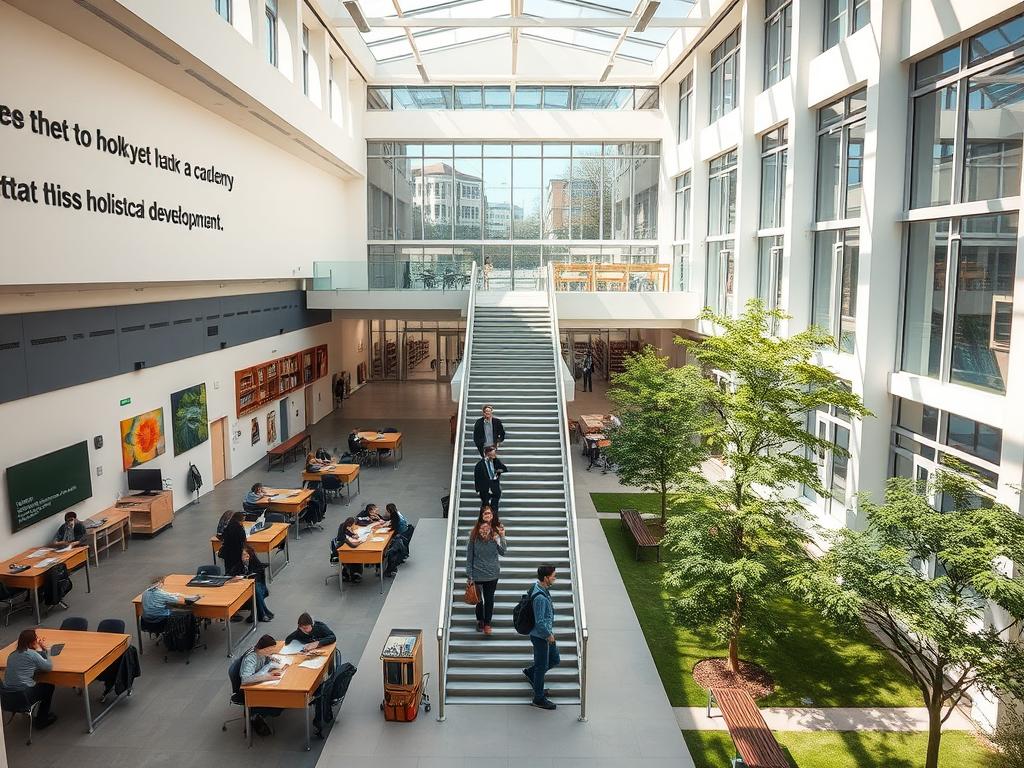
Balancing Education and Football
Imagine swapping textbooks for training cones at lunchtime. The team’s curriculum spans robotics, sports science, and languages, with schedules synced to match training sessions. Performance in class is tracked at the same level as pitch stats—because brilliance isn’t just about goals.
For those eyeing non-football futures, the program offers:
- University partnerships: Early college credits in sports management.
- Vocational workshops: From physiotherapy to sports journalism.
- 24/7 nutritionist access: Meals tailored to exam stress or match days.
Life at the Academy Dormitory
The 2024 dormitory expansion added sleep pods and silent study zones. Youth athletes share suites with mentorship content—like leadership seminars led by club legends. Nightly debriefs blend game analysis with mindfulness exercises.
Mental health support is baked into daily routines. Counselors host group sessions, while an app tracks wellness metrics. It’s not just about building better players—it’s about raising resilient individuals ready for any level of challenge.
Recent News and Updates
Fresh tactics and intense drills are shaping the upcoming campaign—get the inside scoop. With July friendlies against SC Verl U21 wrapped up, the focus now shifts to August’s DFB Youth League kickoff. Here’s what’s fueling the team’s momentum.
Preparations for the 2025/26 Season
A new high-press system is turning heads. Coaches are drilling players to win possession within 8 seconds, mirroring the first team’s aggressive style. The Arnhem training camp will test this approach with double sessions and altitude simulations.
Fitness benchmarks are stricter than ever. The app export feature tracks progress in real time, comparing speed and endurance to last season’s stats. Players hitting targets earn a scheduled push for scouting reports.
Upcoming Matches and Tournaments
Mark your calendars for these key fixtures:
- August 12: DFB Youth League opener vs. Bayer Leverkusen U19s.
- August 19: High-stakes clash with RB Leipzig’s rising stars.
Can’t make it to the pitch? BVB TV+ will stream all U19 matches—check the scheduled push for live alerts. Tickets for home games at Hohenbuschei are already moving fast, with a 20% spike in app export downloads for digital passes.
The Role of Lars Ricken: Youth Coordinator
Leadership in youth development isn’t just about training—it’s about vision. Since taking charge in 2008, Lars Ricken has redefined what it means to nurture talent. His blend of data-driven decisions and old-school passion makes him the heartbeat of this system.
His Vision for the Academy
Ricken’s “Complete Player” philosophy goes beyond skills. It’s about molding athletes who excel on and off the pitch. Partnering with Dortmund University Hospital, he integrated sports science into daily drills. The result? A 40% spike in first-team debuts since 2015.
His 2019 data analytics overhaul was a game-changer. Now, every pass, sprint, and decision is tracked to tailor development. For players, it’s like having a GPS for their potential.
Success Stories Under His Leadership
From local leagues to the Champions League, Ricken’s protégés shine. Alumni now coach across Europe, spreading his methods. One standout? A defender he scouted at 14 just signed with a top-tier level club.
Next up: a 2026 AI scouting initiative. Imagine algorithms spotting the next superstar before they even hit puberty. For Ricken, the future isn’t coming—it’s already here.
Comparing Dortmund’s Academy to Others
When ranking Europe’s elite development systems, one program consistently stands out. Its blend of cutting-edge resources and player-first philosophy creates a pipeline few can match. Let’s break down what makes it unique and how it stacks up against continental rivals.
What Sets It Apart?
While La Masia and Cobham boast impressive facilities, this system’s psychological edge shines. Anti-burnout protocols include:
- Mandatory rest cycles: Players get 2 mental health days monthly.
- Customized training loads: Wearables adjust drills based on stress level.
- Dedicated sleep coaches: 10% longer recovery vs. Premier League academies.
Bundesliga 2 loan partnerships give players real-game experience early. Last season, 8 loanees started over 20 matches—double Chelsea’s output.
Benchmarking Against European Giants
Bundesliga debut ages tell the story. Their graduates average 18.7 years old—younger than Bayern Munich’s (19.4) or PSG’s (20.1). Cost efficiency is another win:
- €220k per player developed vs. Ajax’s €310k.
- 92% retention rate for U17s, topping La Liga academies.
The coach-to-player ratio (1:4) beats Manchester City’s 1:6. And with 15 teams across age groups, depth rivals Barcelona’s famed structure.
From tailored training to smarter loans, this blueprint proves development isn’t just about facilities—it’s about refining every level of the process.
Challenges and Future Goals
The road to excellence isn’t just about talent—it’s about adapting to change. For top academies, staying ahead means tackling financial rivals, expanding globally, and embracing tech. Here’s how they’re pushing boundaries.
Maintaining Excellence in Youth Development
Premier League clubs now offer 300% higher salaries for teen prospects. To compete, academies focus on unique perks:
- Biometric smart jerseys: Rolling out in 2026 to track stamina and injury risks during matches.
- Mental resilience programs: VR simulations mimic club world cup pressure scenarios.
- Dual-path contracts: Guaranteed university scholarships if pro careers stall.
Expanding Global Influence
Scouting networks now target emerging markets with precision:
- US/Mexico hubs: 12 new partnerships with MLS Next Pro teams to identify dual-national talents.
- Asian football alliances: Korea’s Jeonbuk Hyundai will co-host a 2025 youth tournament.
- Digital scouting: AI analyzes 500+ hours of content monthly from African leagues.
Looking ahead, a women’s academy launches in 2027—mirroring the men’s level of rigor. The goal? To dominate the next club world cup cycle, on and off the pitch.
Why Borussia Dortmund’s Youth Academy Stands Out
What makes a team factory truly special? It’s the perfect mix of old-school grit and modern training smarts. Alumni like Mario Götze prove it—lifting the World Cup after honing their skills here.
The secret? A community-first approach. Local scouts spot talent early, while cutting-edge tech sharpens every touch. With an 85% pro contract success rate, the system speaks for itself.
Ready to join the next wave? Trials open twice yearly for ages 9–17. Bring your passion, and they’ll handle the rest—from drills to life skills. This isn’t just football; it’s a launchpad for greatness.

